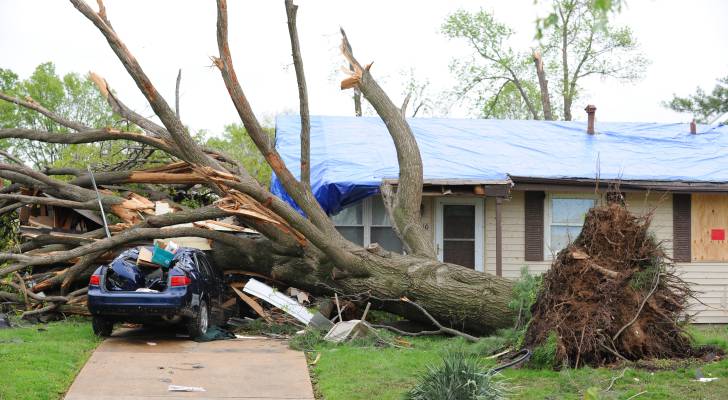
Home insurance used to be an afterthought, but these days it’s a rapidly escalating expense that is believed to be“deepening the housing crisis,” warns the Consumer Federation of America (CFA).
A recent report from the CFA highlights a sharp increase in premiums between 2021 and 2024, when the average homeowners’ insurance rate climbed 24% to $3,303. That’s significantly higher than the average property tax rate in 2023, which was $1,889, according to the Tax Foundation.
Don’t miss
- I’m 49 years old and have nothing saved for retirement — what should I do? Don’t panic. Here are 5 of the easiest ways you can catch up (and fast)
- Gain potential quarterly income through this $1B private real estate fund — even if you’re not a millionaire. Here’s how to get started with as little as $10
- Robert Kiyosaki warns of a ‘Greater Depression’ coming to the US — with millions of Americans going poor. But he says these 2 ‘easy-money’ assets will bring in ‘great wealth’. How to get in now
If this pace were to continue, many homeowners could see their insurance rate double in roughly 10 years.
Unfortunately, this burgeoning insurance crisis isn’t limited to high-risk regions such as Florida, California and Louisiana. Rates are going up across the country and even homeowners in relatively “safe” states could see ballooning expenses in the near future.
Here’s a closer look at what’s driving up insurance costs for ordinary families, and what you can do to protect yourself before the crisis spirals out of control.
Why homeowners insurance is going up
According to a report from JPMorgan, inflation and climate change are the driving forces behind the property insurance crisis.
Simply put, climate disasters are becoming more frequent and less predictable, as scientists have been warning for years. Meanwhile, home prices have climbed rapidly in recent years, which means it costs more to repair or replace a home after it has been damaged.
The combination of these factors has made it difficult for insurance companies to price policies appropriately and has pushed rates higher to compensate for the added risks. States like California and Florida are at the forefront of this unfortunate crisis because of their exposure to extreme weather events such as hurricanes and wildfires.
However, Midwestern states that don’t experience hurricanes and wildfires are not immune to rising rates. With damage from tornadoes, floods, hail, and high winds on the rise, property insurance costs are climbing across the board in these regions.
In fact, Insurify forecasts that the Midwest will bear some of the highest increases as insurers overhaul their pricing strategies to reflect escalating weather-related risks.
With this in mind, homeowners across the country should prepare for the rapidly rising costs of insuring their properties.
Read more: Want an extra $1,300,000 when you retire? Dave Ramsey says this 7-step plan ‘works every single time’ to kill debt, get rich in America — and that ‘anyone’ can do it
How to protect yourself
While you can’t change the insurance industry or reverse climate change, there are ways to potentially limit the rising costs of insurance over the long term.
For starters, shop around for the best insurance rate that you can find every year when you approach renewal. Ask multiple providers for quotes and see what you can do to get the best deal possible.
Investing in climate-resilient features could also limit the damage from extreme weather events and qualify you for a discount on insurance. According to Universal Property, upgrading your roof, electrical wiring or plumbing could potentially reduce your insurance costs.
You could also lower your rate by raising the deductible on your policy and skipping small claims.
If the property insurance rates in your area are too high, you might even consider moving to another part of the country. A recent report from the Federal Insurance Office — which analyzed 246 million insurance policies sold between 2018 and 2022 — found that homeowners in regions most vulnerable to climate-related disasters paid, on average, 82% more for insurance than those in the lowest-risk areas.
As for potential homebuyers, don’t forget to include the annual cost of property insurance in your budget. Focusing on newer homes with less depreciation and more climate-resilient features could reduce your monthly expenses while also giving you some peace of mind.
What to read next
- JPMorgan sees gold soaring to $6,000/ounce — use this 1 simple IRA trick to lock in those potential shiny gains (before it’s too late)
- This is how American car dealers use the ‘4-square method’ to make big profits off you — and how you can ensure you pay a fair price for all your vehicle costs
- Here are 5 ‘must have’ items that Americans (almost) always overpay for — and very quickly regret. How many are hurting you?
Like what you read? Join 200,000+ readers and get the best of Moneywise straight to your inbox every week. Subscribe for free.
This article provides information only and should not be construed as advice. It is provided without warranty of any kind.